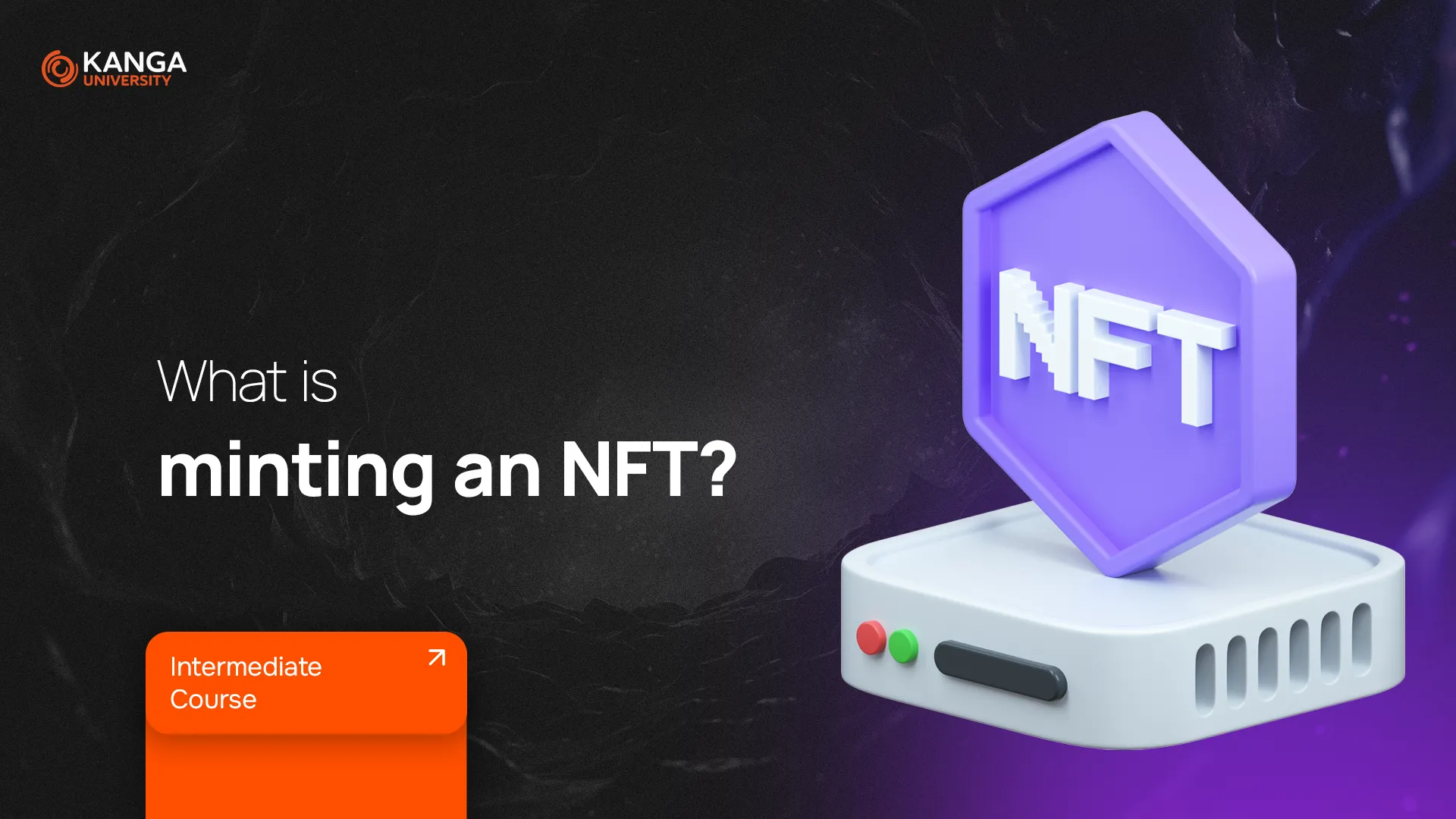
NFTs – or non-fungible tokens – have taken the world of digital art and investing by storm. They’re unique digital assets stored on the blockchain that prove ownership of a specific file – like an image, video, song, or digital artwork.
One of the most exciting parts of the NFT world is minting – the process of turning a digital file into a certified NFT that can be bought and sold. In this lesson, you’ll learn what minting means, how it works, and how to start doing it yourself.
What Is NFT Minting?
Minting an NFT means taking a digital file and officially publishing it on the blockchain as a unique token. It becomes a verifiable, unchangeable digital item – and can now be sold or traded.
This file could be anything: a photo, a video, a 3D model, a song. Once it’s minted, it becomes a crypto asset with proof of ownership and authenticity, tracked and stored on the blockchain.
How Does the Minting Process Work?
It might sound technical, but the steps are actually pretty straightforward:
1. Buy the right cryptocurrency.
You’ll most likely need Ethereum (ETH), as it’s the most widely used blockchain for NFTs. Make sure you have a crypto wallet and some ETH ready to go.
2. Choose a platform for minting.
Popular NFT marketplaces include OpenSea, Rarible, Mintable, SuperRare, and Foundation. If you’re just getting started, look for one with a simple interface and low or no fees.
3. Connect your crypto wallet.
You’ll need to link your wallet to the platform – usually by scanning a QR code or using a browser extension like MetaMask.
4. Set up your profile.
Add some basic info about yourself, your website, and the types of crypto you accept. Buyers often like to know who they’re buying from.
5. Create your NFT.
Click the “Create” button on your platform of choice. Upload your digital file, give it a title and description, choose your price, and decide whether to receive royalties for future resales.
That’s it – your creation is now officially an NFT.
Is Minting Expensive?
It depends. Some platforms charge a “gas fee” – a fee to write the NFT onto the blockchain. This fee can vary a lot, depending on how busy the network is. Sometimes it’s a few dollars, sometimes more.
The good news? Many platforms now offer lazy minting – a feature that lets you list your NFT for sale without actually paying to mint it until someone buys it.
What Is Lazy Minting?
Lazy minting means your NFT isn’t officially added to the blockchain until someone buys it. This saves you upfront costs – and the buyer covers the minting fee when they make the purchase. OpenSea and other major platforms offer this option.
Should You Mint an NFT?
If you’re an artist, creator, or just curious about NFTs, minting can be a fun and potentially rewarding place to start. But before jumping in, ask yourself a few key questions:
-
Which blockchain will you use? Ethereum is the most popular, but alternatives like Polygon, Tezos, and Binance Smart Chain are cheaper and more eco-friendly.
-
What will your NFT be used for? Art? Gaming? A digital collectible?
-
Which platform best suits your goals? Some platforms are art-focused, others are more general. Pick one that fits your style.
Things to Consider Before Minting:
Blockchain compatibility:
Each blockchain supports different NFT standards. Choose one that’s secure, reliable, and fits your needs.
Ecosystem features:
Think about how your NFT will be used. If you want your token to be tradable or used across different apps or games, make sure the platform supports that.
Fees:
Fees can vary widely. If you’re testing the waters, start with a platform that offers free or low-cost minting.
NFT marketplaces:
Choose a platform like OpenSea, Rarible, or Mintable based on your interests and your audience. Look for places where your NFT has the best chance to stand out.
Summary
Minting an NFT is your ticket to entering the world of Web3 creativity and digital ownership. If you’re just starting out, try using a free platform and explore how it all works. If you like it, keep going – explore different types of NFTs, grow your collection, or create your next masterpiece.
NFTs are still evolving, and new opportunities are opening up every day. Minting is just the beginning.
